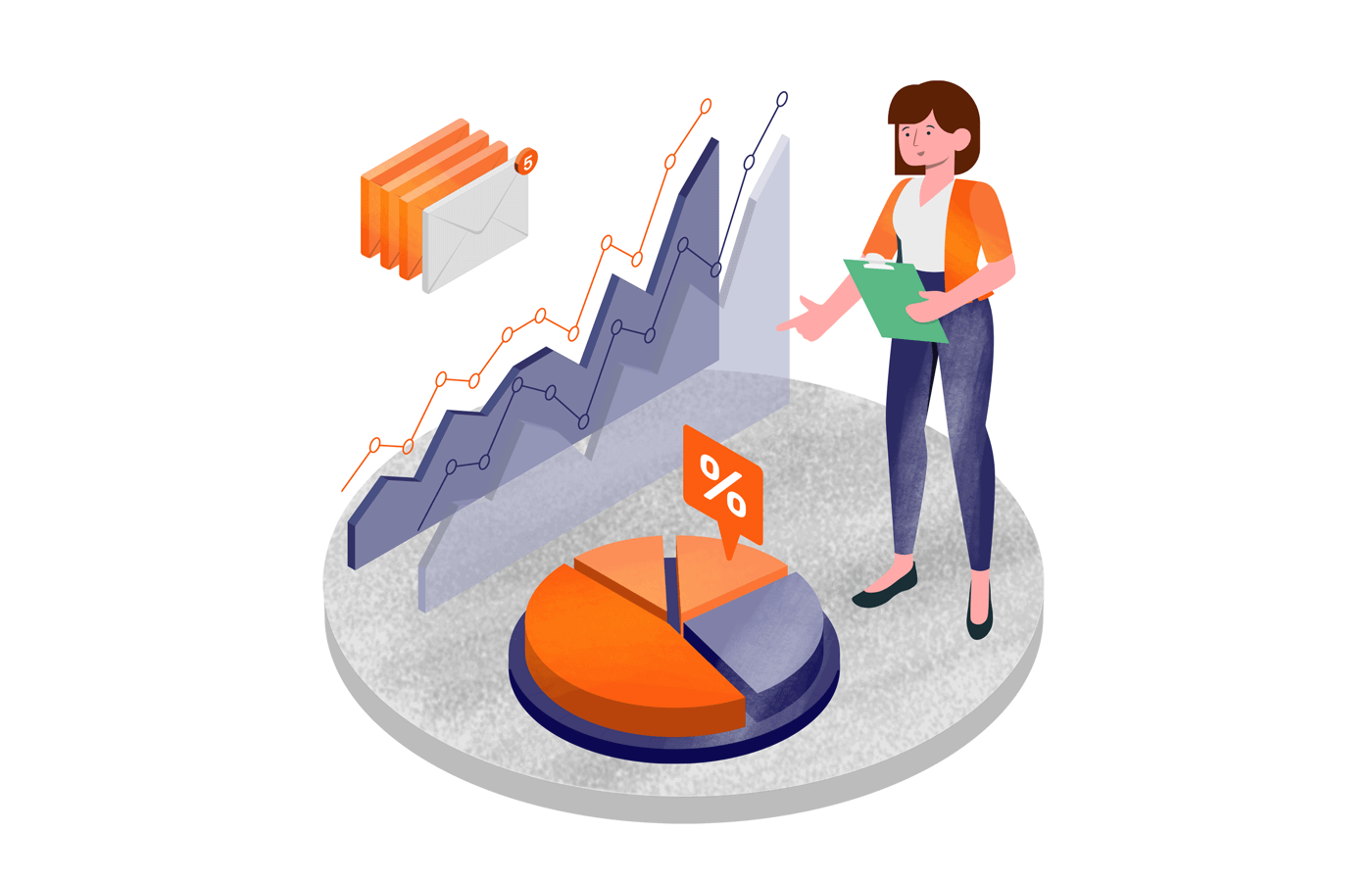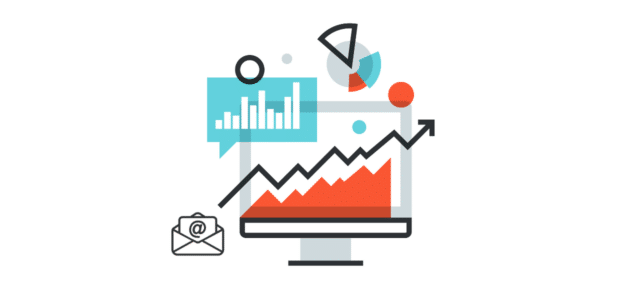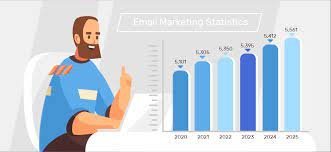Okay, let’s dive in! You know how vital it is to connect with your audience in today’s digital world, right? And email marketing? Still a powerhouse for achieving just that. But to truly maximize your reach, you need the right email marketing software backing you up.
This isn’t about the basics; we’re talking advanced strategies to take your email game to the next level. Think personalized content, AI-powered insights, and automation that makes your life easier while boosting engagement and, ultimately, driving serious revenue. Are you ready? Let’s go!
Why Email Still Reigns Supreme: Unveiling Its Undeniable Power
You might ask, “Is email really that relevant anymore in a world where social media rules?” The answer is a resounding YES! Email offers a direct line to your audience, fostering a personal connection that social media often lacks. Think about it – you can address recipients by name, segment your list based on their preferences, and deliver tailor-made content that resonates on a deeper level.
It’s not just about personalization, though. Email boasts superior conversion rates compared to other channels. People who engage with your products through email are more likely to spend 138% more than those who don’t. That’s a massive difference! And unlike social media, where algorithms can make or break your visibility, you own your email list. You’re in control, which brings stability and predictability to your marketing efforts.

Choosing Your Weapon: Selecting the Perfect Email Marketing Software
Picking the right email marketing software is critical for success. It’s the foundation upon which you’ll build your entire email strategy. But with so many options available, it can feel overwhelming!
Don’t sweat it; we’ll break it down. Consider these key factors when making your decision:
Features That Fuel Success: What to Look For
- Personalization Capabilities: Look for software that allows dynamic content blocks to tailor your messages based on subscriber data. The ability to personalize emails using AI tools for optimal send times is a game-changer.
- Automation Prowess: Streamline your workflow with automated email sequences triggered by subscriber actions or specific dates. This ensures the right message reaches the right person at the right time, nurturing leads and driving conversions.
- Segmentation Powerhouse: Go beyond basic demographics. The software should allow you to segment your audience based on purchase history, engagement levels, and more. This ensures relevance and boosts those all-important open and click-through rates.
- Seamless Design and Testing: A visual builder makes creating stunning emails a breeze, even without coding knowledge. The platform should also offer A/B testing capabilities to experiment with subject lines, content, and calls-to-action, allowing you to continuously optimize your campaigns.
- Ironclad Deliverability: What good is a brilliant email if it ends up in the spam folder? Look for software that boasts a high inbox placement rate and offers support for deliverability best practices, like IP warm-up.
Crafting Emails That Convert: Igniting Engagement and Action
Having the right software is just the first step. Now it’s time to craft compelling emails that captivate your audience and drive results. Here’s how:
Magnetic Subject Lines: The Art of the Irresistible Open
Your subject line is your first impression—make it count! It should be concise, attention-grabbing, and offer value to the recipient. Experiment with personalization, emojis, and power words to pique their interest and make them eager to open your email.
Content is King: Delivering Value With Every Message
No one wants to be bombarded with irrelevant or boring content. Provide value in every email you send, whether it’s educational, entertaining, or exclusive offers. Focus on quality over quantity, and your subscribers will reward you with their attention and loyalty.
Mobile-First Mindset: Optimizing for the On-the-Go Reader
With most emails being opened on mobile devices, responsive design is non-negotiable. Ensure your emails look fantastic and are easy to read on any screen size. This improves the user experience and keeps your audience engaged, no matter where they are.
Compelling Call-to-Action: Guiding Readers Towards Conversion
A clear call to action (CTA) is the heart of every successful email. It should be visually prominent, use action-oriented language, and guide the recipient towards the desired action, whether it’s making a purchase, downloading a resource, or visiting your website.
Segmentation Strategies That Work: Reaching the Right Audience
Remember, one size doesn’t fit all in email marketing. Segmentation is key to maximizing your reach and impact. Divide your audience into smaller groups based on factors like:
- Demographics: Age, location, gender.
- Purchase History: Past purchases, browsing behavior.
- Engagement Level: Open and click-through rates.
- Interests: Content preferences, survey responses.
By sending targeted messages to each segment, you increase relevance, engagement, and ultimately, your return on investment.

AI-Powered Personalization: The Secret Sauce to Unbelievable Engagement
Personalization is more than just using someone’s name. AI takes it to the next level, allowing you to deliver hyper-relevant content that resonates with each individual.
Imagine this: your email marketing software analyzes customer data to identify patterns and predict preferences. It then uses this information to:
- Recommend products: Suggest items based on browsing history and purchase behavior.
- Customize content: Display different content blocks based on individual interests.
- Optimize send times: Determine the best time to send emails based on individual engagement patterns.
This level of personalization creates a truly unique experience for each subscriber, fostering deeper connections and driving conversions.
Data-Driven Decisions: Measuring Your Email Marketing Success
Don’t just send emails and hope for the best. Track key metrics to understand what’s working and what’s not. Analyze data like:
- Open rates: How many people are opening your emails.
- Click-through rates: How many people are clicking on links in your emails.
- Conversion rates: How many people are completing the desired action (e.g., making a purchase).
- Unsubscribe rates: How many people are unsubscribing from your list.
These insights will help you refine your strategy, optimize your campaigns, and continuously improve your email marketing performance.
Content Strategies That Elevate: Leveraging Your Content for Maximum Impact
Your email marketing software is a powerful tool for distributing your valuable content. Integrate blog posts, articles, videos, and other content into your emails to:
- Drive traffic to your website: Increase visibility and engagement.
- Establish thought leadership: Position yourself as an authority in your industry.
- Nurture leads: Educate and inform your audience, moving them closer to conversion.
- Boost brand awareness: Keep your brand top-of-mind and foster recognition.
By strategically incorporating content into your email marketing, you create a win-win situation—providing value to your audience while achieving your marketing goals.

Testing and Optimization: The Never-Ending Quest for Improvement
Email marketing isn’t a set-it-and-forget-it endeavor. Continuous testing and optimization are crucial for long-term success. Here’s a pro tip: Run A/B tests on various elements, such as:
- Subject lines: Experiment with different wordings, emojis, and personalization.
- Content: Test different layouts, messaging, and calls to action.
- Send times: Find the optimal times to reach your audience.
- Email frequency: Determine how often to send emails without overwhelming your subscribers.
By analyzing the results and making data-driven adjustments, you can continuously refine your email marketing campaigns and maximize their impact.
Conclusion
Whew! We covered a lot, but it’s clear: email marketing is a powerful force when wielded correctly. By leveraging the right email marketing software and implementing these advanced strategies, you can: Not only can you reach a wider audience, but you can also enhance customer engagement and loyalty. The benefits of email marketing strategies are evident in improved conversion rates and customer retention, making them an essential component of any successful marketing plan. Embrace the potential of email marketing to elevate your brand and connect meaningfully with your audience.
- Expand your reach: Connect with a broader audience and build lasting relationships.
- Boost engagement: Create captivating emails that people love to open and click.
- Drive conversions: Turn subscribers into loyal customers and advocates for your brand.
It’s an exciting journey, and with the right tools and mindset, you’re well on your way to email marketing mastery! To truly excel, you must continuously refine your approach and stay updated on industry trends. Implementing effective email marketing strategies for success will not only enhance your engagement rates but also build lasting relationships with your audience. Remember, each email is an opportunity to connect and inspire action, so make every message count!
FAQs
How do I build my email list organically? Great question! Focus on creating valuable content that people want to receive. Offer lead magnets like ebooks, checklists, or webinars in exchange for email signups. Promote your email list on your website and social media, and make the signup process clear and easy.
What are some common mistakes to avoid in email marketing? Sending generic, untargeted emails is a big one! Make sure you segment your list and personalize your messages. Also, avoid spammy tactics like using misleading subject lines or sending too many emails. Always prioritize delivering value to your audience.
How can I measure the ROI of my email marketing efforts? Track key metrics like open rates, click-through rates, and conversion rates. Use analytics to determine how much revenue your email campaigns generate. Compare these results to the cost of your email marketing software and other expenses to determine your overall ROI.

